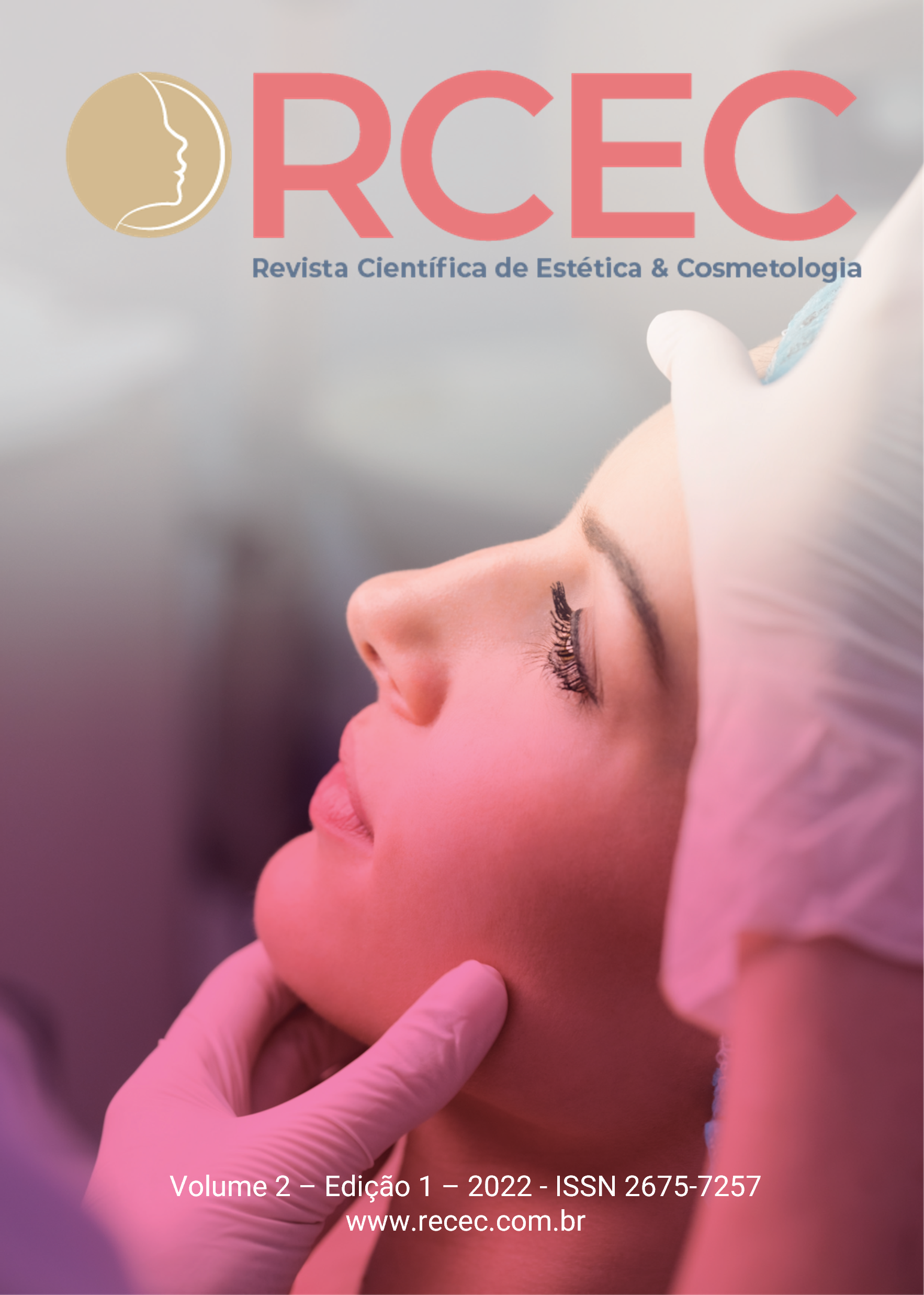O uso do óleo ozonizado de girassol no tratamento de feridas - Série de Casos
Main Article Content
Abstract
ABSTRACT
There are many existing therapeutic resources aimed at improving and optimizing the wound healing and treatment process. The professional must know how to choose the type of coverage and dressing focusing on the particularity of the wound and treatment costs.
Ozone is a molecule formed by three oxygen atoms, characterized as a less stable form of oxygen, after penetrating the body, ozone is able to improve oxygenation and local metabolism, thus it is considered a therapeutic option for wound healing, if delivered in vegetable oil. When in contact with the injured tissue, it reacts forming an antioxidant sealing system.
The aim of this study was to evaluate the healing effect of ozonized sunflower oil on open wounds of 2 patients who had dehiscence in surgical wounds. Participants were subjected to topical applications of ozonated sunflower oil in the affected regions, the evaluation was made through photographic documentation. The results showed positive responses in wound healing after the use of the oil. The authors concluded that ozonized sunflower oil is a treatment option for wounds because it has broad biological activity with few reported side effects, low cost, in addition to being a resource taken from natural and renewable sources.
Article Details

This work is licensed under a Creative Commons Attribution 4.0 International License.
Copyright Statement - Policy Proposal for Open Access Journals
Authors who publish in the Scientific Journal of Aesthetics & Cosmetology agree to the following terms: 1 - Authors retain the copyright and grant the journal the right to first publication, with the work simultaneously licensed under the Creative Commons Attribution License allowing the sharing of the work with acknowledgment of the authorship of the work and initial publication in this magazine. 2 - Authors are authorized to assume additional contracts separately, for non-exclusive distribution of the version of the work published in this journal (eg, publishing in institutional repository or as a book chapter), with acknowledgment of authorship and initial publication in this journal. 3 - Authors are allowed and encouraged to publish and distribute their work online (eg in institutional repositories or on their personal page) at any point before or during the editorial process, as this can generate productive changes, as well as increase the impact and citation of published work.
This is an open access article under the CC-BY license
References
CANDIDO, L.C., Nova abordagem no tratamento de feridas. São Paulo. Senac. 2001.
AMARAL, A., MEDEIROS, M., PARADA, A. Feridas não são doenças do corpo, são doenças da alma. Revista Saúde Quântica, v. 2, n. 2, p. 15-29, 2013.
CARNEIRO, C.M., SOUSA, F.B., GAMA, F.N. Tratamento de feridas: assistência de enfermagem nas unidades de atenção primária à saúde. Revista Enfermagem Integrada, v. 3, n. 2, p. 494-505, 2010.
SMITH, N.L. et al. Ozone therapy: anoverview of pharmacodynamics, current research and clinical utility. Medical Gas Research, v.7, p. 212-219, 2017.
ABOZ – Associação Brasileira de Ozonioterapia, 2019. – Disponível em: www.aboz.org.br; Acessado em: 14/05/22.
BOBBIO, W.J., et al. Evidence for antibody-catalyzed ozone formation in bacterial killing and inflammation. Science, v.298, p. 2195-2199, 2002.
CHAGAS, I.C.S., BORGES, E.L. Evidências da ozonioterapia no tratamento de lesão cutânea crônica. Revista in Derme, n. 69, 2014.
LAGE-MARQUES, M. Estudo da Ozonioterapia como contribuição para a odontologia veterinária. Dissertação (Mestrado em Medicina Veterinária) – Universidade de São Paulo, São Paulo, 2008.
TEIXEIRA, L.R. et al. Comparision of intrarectal ozone, ozone administred in acupoints and meloxicam for postoperative analgesia in bitches undergoing ovariohysterectomy. The Veterinary Journal, v. 197, n.3, p. 794-799, 2013.
TRAINA, A.A. Efeitos biológicos do ozônio diluído em água na reparação tecidual de feridas dérmicas em ratos. Tese (Doutorado em Ciências Odontológicas) Universidade de São Paulo, São Paulo, 2008.
BOCCI, V. Ozone: a new medical drug. Dordrecht: Ed. Springer, 2005.
SCHWARTZ, A. et al. Guía para el uso médico del ozono – Fundamentos terapéuticos e indicaciones. ed. 1. Madrid: Artes Gráficas, 2011.
OLIVEIRA, A.F., MENDES, H.J. Aplicações clínicas do ozônio na odontologia. Ver. Saúde, 2009.
TRAVAGLI, V. et al. Ozone and ozonated oils in skin diseases: a review. 2010.
ZANARDI, I. et al. Ozone and ozoneted oil: mediators of inflammation. 2010.
OLIVEIRA, A.R., WOSCH, C.L. Ozonolysis: the search for a mechanism. Quim. Nova, vol. 35, n. 7, p. 1482-1485, 2012.
ANZOLIN, A.P., SILVEIRA-KAROSS, N.L., BERTOL, C.D. Ozoneted oil in wound healing: what has already beem proven? Medical Gas Research, p. 54-59, 2020.


